Lack of action on immigration is ‘holding South Dakota back,’ dairy farmers say
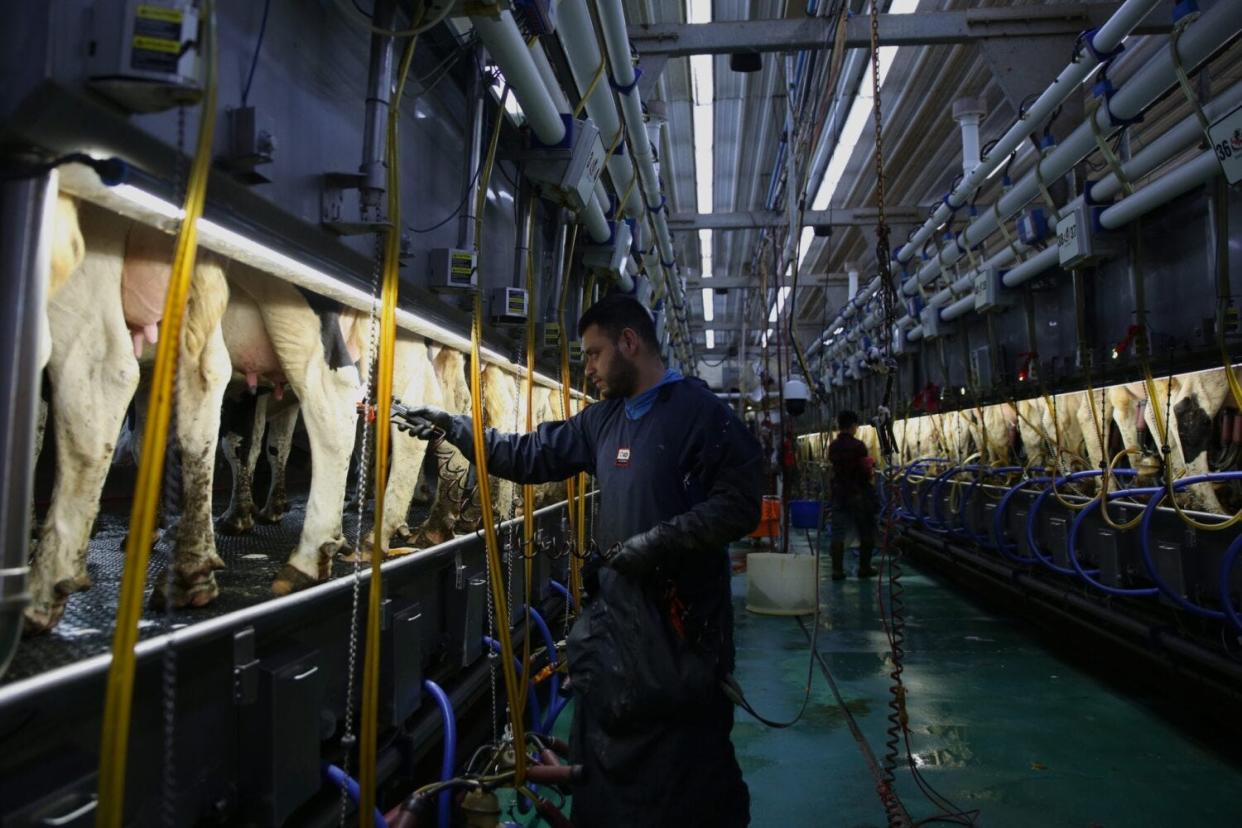
The Department of Homeland Security wanted to do a routine work authorization audit of the Turner County Dairy more than a decade ago.
Walt Bones, who co-owns the dairy and was the state secretary of agriculture at the time, complied with the obligation, sending the official documents employers must have on hand for employees: driver’s licenses, Social Security cards, or migrant-worker visas.
About 10 employees had falsified documents, the audit found, and were working illegally. Some of them had been working for years with Bones, who said he did not know their actual legal status; he’d invested in them and trained them.
He had to let them go. At the same time, Bones couldn’t find new employees to hire as dairy workers – a near constant problem in the agriculture industry – so he contracted with another firm to temporarily fill in the gaps.
“You’ll never guess who they hired. The same people we just let go,” Bones said. “That is case in point how screwed up our system is.”
The Department of Homeland Security did not respond to a confirmation request about the audit history.
The majority of farmhands in South Dakota’s booming dairy industry are foreign-born. The 24/7 operations are jobs most Americans don’t want – due to the long hours, the rural setting and the pay, Bones said, so immigrants and foreign guest workers meet the need.
About 70% of farmworkers in the United States were born in Mexico or Central America, according to the Department of Labor – though that doesn’t include workers in the livestock industry. An estimated 44% of farmworkers in the U.S. lack legal status, according to the survey of 2,172 crop farmworkers.
The country’s agricultural economy would break without foreign-born people working as farmhands, and the country’s homegrown food supply would disappear, said South Dakota Farm Bureau Federation President Scott VanderWal.
“It’s holding South Dakota back economically,” VanderWal said. “If you want to expand but can’t get enough workers to help out, that’s damaging to a state like South Dakota where our economy directly depends on agriculture to drive it.”
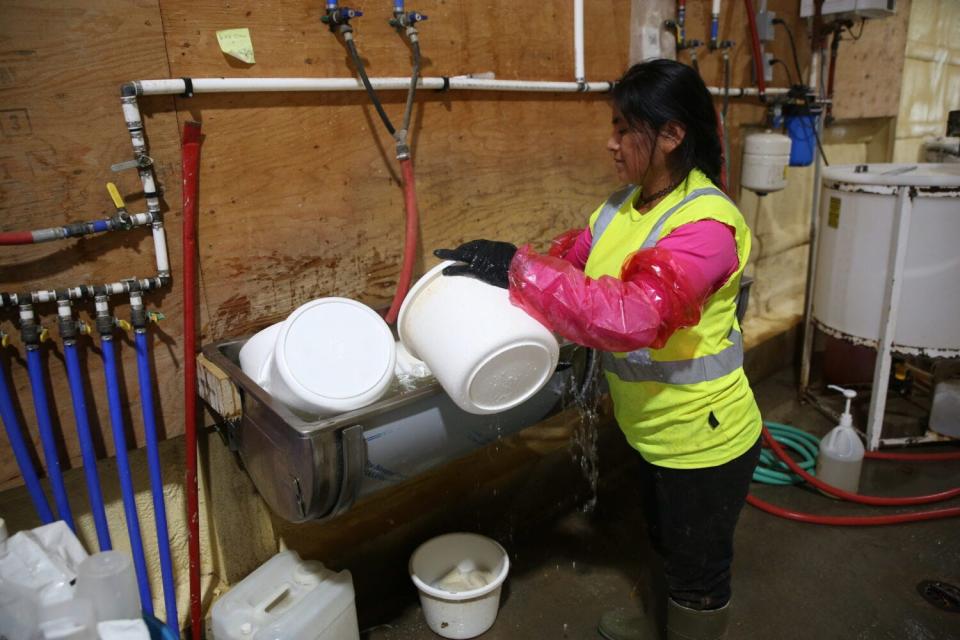
Latest effort to address immigration, agriculture fails in Congress
The most recent effort to fix the system for foreign agricultural workers, the Farm Workforce Modernization Act, was killed by Congress late last year; though the House passed the act multiple times, an amended version didn’t pass the Senate at the end of December.
It would have offered a path to permanent residency for undocumented employees who “have a track record of playing by the rules,” said Lynn Boadwine, managing operator of Boadwine Farms in Baltic.
Rep. Dusty Johnson voted against the act, saying it was a “special deal for California” and other vegetable and fruit-producing states while cutting out the processing industry — meat, cheese and biofuel processing — important to the agriculture industry in South Dakota and other Midwestern states. Johnson said Democratic leadership wouldn’t accommodate requests to include processing. The American Farm Bureau opposed a provision of the bill that would allow farmworkers to sue employers when conditions of employment are not met.
While the bill did have special relief for dairies, it wasn’t enough to sway Johnson.
“We need to be strategic enough to understand whether a minor victory moves us closer toward a broader solution or moves us further away from that solution,” Johnson said. “Had we given California and other vegetable and fruit-producing states everything they needed, it would have made getting relief related to ag processing a lot less likely — I think it would have doomed the middle of the country into a serious workforce shortage.”
Dairy operations already find it increasingly difficult to obtain labor to meet South Dakota’s growing dairy industry needs.
Since the Farm Workforce Modernization Act was first introduced in 2019, South Dakota’s inventory of dairy cows has risen by 53%, producing 4.16 billion pounds of milk worth over $1 billion in 2022.
The increase in milking cows over the past couple decades came from expansions of longstanding dairies, diversification of existing farms, the relocation of dairy operations to South Dakota from states such as California, and the expansion of milk-processing capacities with the state’s growing cheese industry.
Dorothy Elliott, who operates a dairy with 6,500 cattle near Lake Norden with her husband, said the country lacks incentives to create a labor force through immigration, and industries such as dairy production and agriculture “lack clout” to make a difference.
Farms can use a range of worker visa programs, though owners say they’re costly, complicated and restrictive. H-2A visas, which are popular guest worker programs for seasonal farmhands, can’t be used by dairy operations because milking cows isn’t a seasonal need.
“The dairy industry is managing, but it’s limping along,” Elliott said.
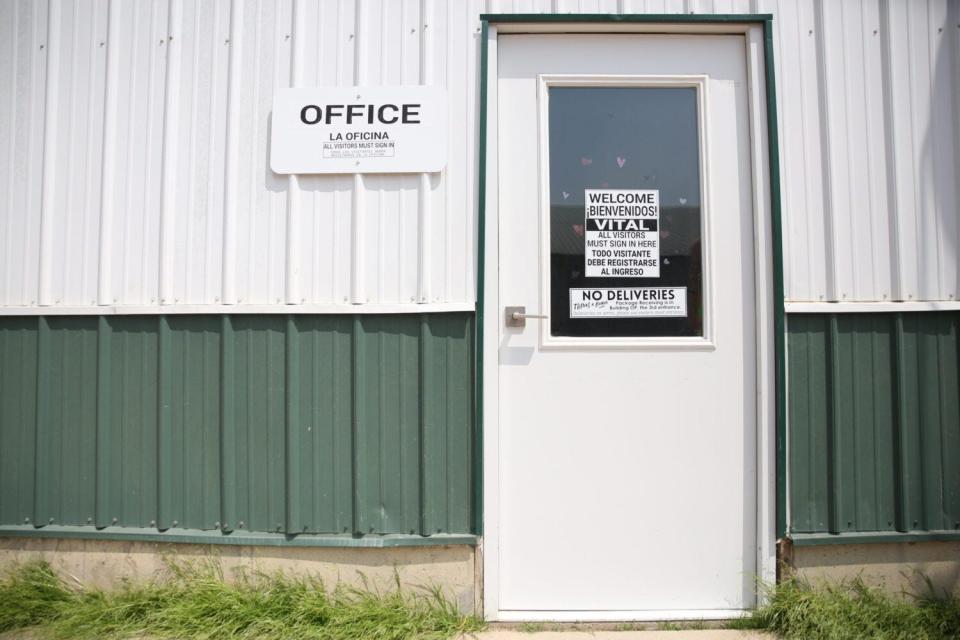
U.S. visa program improves quality of life for foreign families, worker says
Elliott and Bones compare their immigrant and guest workers with the hardworking homesteaders of the 1800s. Although the dairy industry can’t use H-2A workers, it can use J-1 visas, which is a cultural exchange program for college students in the summer and professionals for years at a time. The dairy industry can also obtain professional workers with TN visas, through the North American Free Trade Agreement, which requires a minimum education of a bachelor’s degree. Most TN workers in the dairy industry have a background in dairy science or veterinarian degrees. There are no restrictions for how many J-1 or TN visas can be granted in a year.
Most of the money guest workers make goes back to their families in their native countries to enroll children into school, they say, or to help them establish their own operations back home.
Aurelio Garcia, a 40-year-old father of three from Aguascalientes in Mexico, has been an H-2A worker with Boadwine Farms since 2021, where he focuses on the farm piece of the operation – raising alfalfa or other crops. He sends roughly $2,000 home a month, or about 75% of his monthly income.
That money allowed him to pay tuition for his children to go to school, build a house for his family and help his father financially – all of which has improved his family’s quality of life. He can more easily afford to send his children and wife to the doctor when they’re sick or pay for their eyeglasses or braces.
It’s eight months away from home each year for three years, but it’s worth the sacrifice, he said through a translator. He lives in free housing provided by Boadwine Farms while working in South Dakota.
Garcia applied for the H-2A program in 2013 but “wasn’t one of the lucky ones” then.
“The people who were only able to eat two tortillas a day can now eat four tortillas per meal with this money,” Garcia said through a translator. “Sometimes we were only able to eat meat once a week, and now we can eat meat every day. I believe the majority of people in Mexico would like to come work in the U.S. to be able to afford that.”
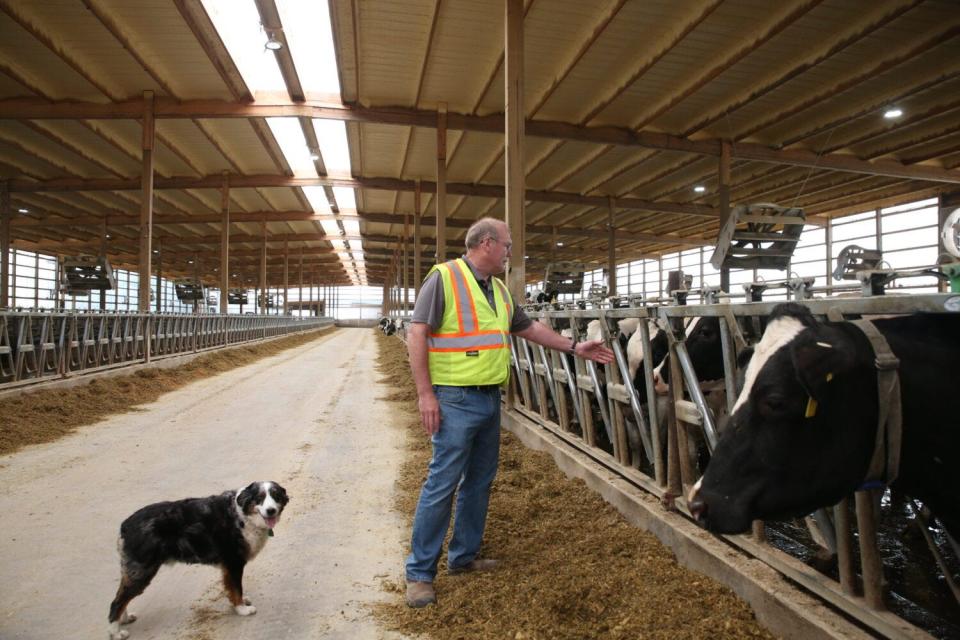
Immigration, foreign programs improve U.S. industries, farmers say
The United States’ largest market for dairy products is Mexico. That’s because the more money guest workers earn and send home, the more costly food and produce families can afford, which only further benefits South Dakota, Boadwine said.
“Guest workers and immigrant workers isn’t ‘money leaving the country,’ but expanding the incomes of countries that are evolving and will become our customers,” said Boadwine, whose workforce is over two-thirds foreign-born.
But immigration debates have corrupted ideas about foreign labor in the country, especially for critical roles in agriculture, Elliott added.
“The average American says they don’t want people to come into the country without any kind of scrutiny or security, but at the same time most Americans are quite happy not having to do the jobs the border hoppers are doing,” Elliott said. “They turn a blind eye to the issue when it suits them and then get up and shout about it without doing anything to fix it otherwise.”
Nearly 95% of Elliott’s workforce is foreign labor, with about half domestic hires with immigrant backgrounds and the other half made up of J-1 or TN workers. The Elliotts are planning to expand with a neighbor for another 5,000-cow dairy.
Elliott and her husband had lived in Ireland for years raising a family and farming, but were persuaded by state officials and marketing efforts to move to South Dakota and establish a dairy farm. Elliott was born in the United States and their children were easily naturalized, but it took her husband another eight years to gain citizenship.
Even though the process was difficult for her family, Elliott said it was a breeze compared to the process of seeking proper documentation or visas for most people seeking work in the industry.
Bones said he’s seen others experience the same.
“Those folks that are here, that we’ve trained, want to get citizenship or their visas,” Bones said. “Our system is so overwhelmed even those who want to do it right can’t succeed in a timely manner.”
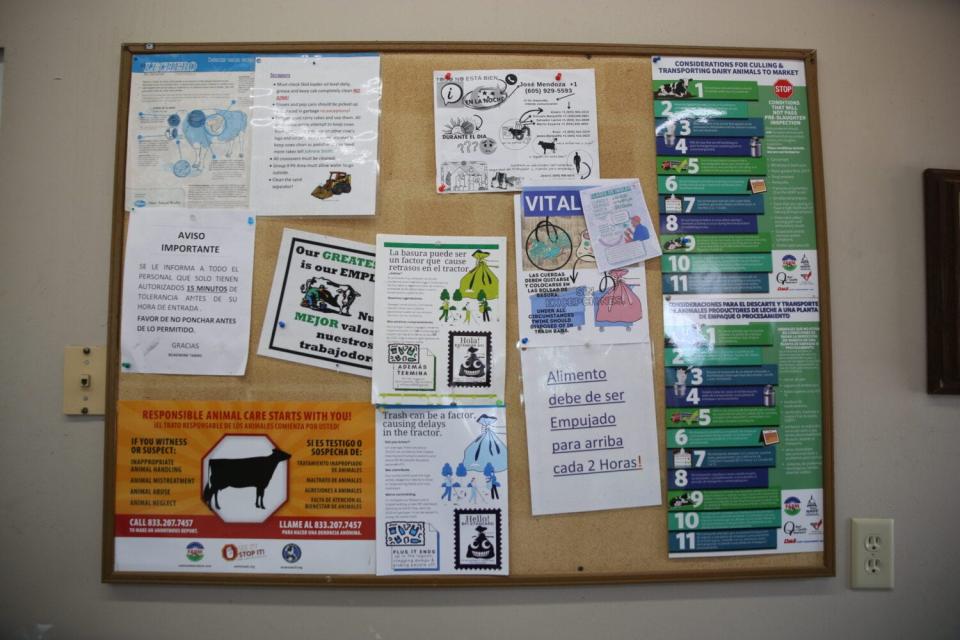
Status quo could lead to higher prices, ‘national security issue’
Bones has been proposing immigration changes since he was secretary of agriculture to give implementation and enforcement power to states based on their own industries and needs.
Those suggestions have “obviously gone nowhere,” Bones said.
Rep. Johnson said the nation’s southern border needs to be secured before Congress and the executive branch pass meaningful immigration or work-visa reform. Until President Joe Biden takes steps to partner with Republicans and secure the border, Johnson said, bipartisan solutions will remain elusive.
“There are clearly improvements that need to be made on both sides of the ledger. We need an executive and legislative branch that are mature enough to address those together,” Johnson said.
But Boadwine thinks Congress should “take the smaller bite” first.
“Fix the one problem in the dairy industry, improve guest worker programs and let that be a template for how you go forward with immigration policy as a whole,” Boadwine said. “You’ve got to do something sometime or it just stays the same.”
Elliott is skeptical politicians will ever find an immigration solution. Instead, she’s turning to robotics.
One of her barns uses technology to milk the cows. That milk is the most expensive milk she produces because of the cost to purchase the equipment and because the robots are less efficient than humans.
She fears if technology is the route farms have to take, the higher costs could be passed on to milk and cheese consumers. Or the country could shift to a reliance on overseas production.
If that happens, it could cause worse price fluctuations and supply problems due to natural disasters or geopolitical situations, like the vehicle shortage caused by chip manufacturing shortages, or Russia’s invasion of Ukraine, which has threatened a major source of the world’s cereal grain production. That would be a “national security issue,” Bones said.
“We could buy all of our food from overseas,” Bones said, adding sarcastically: “That seems to be working so well with other consumer items.”
This article originally appeared on Sioux Falls Argus Leader: Lack of action on immigration is ‘holding SD back,’ dairy farmers say

